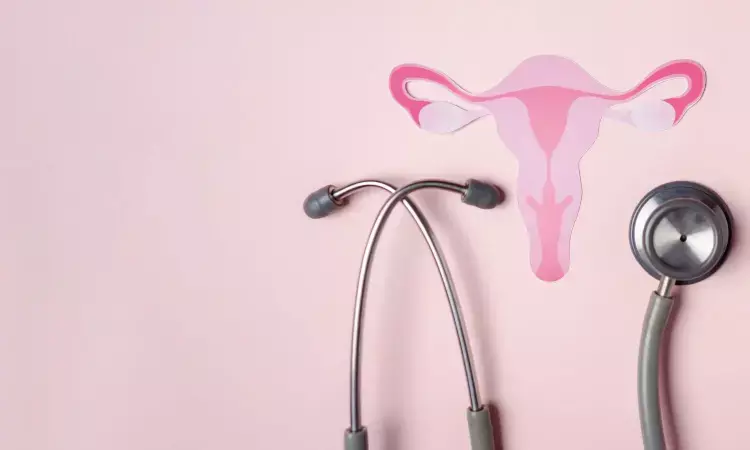- Home
- Medical news & Guidelines
- Anesthesiology
- Cardiology and CTVS
- Critical Care
- Dentistry
- Dermatology
- Diabetes and Endocrinology
- ENT
- Gastroenterology
- Medicine
- Nephrology
- Neurology
- Obstretics-Gynaecology
- Oncology
- Ophthalmology
- Orthopaedics
- Pediatrics-Neonatology
- Psychiatry
- Pulmonology
- Radiology
- Surgery
- Urology
- Laboratory Medicine
- Diet
- Nursing
- Paramedical
- Physiotherapy
- Health news
- Fact Check
- Bone Health Fact Check
- Brain Health Fact Check
- Cancer Related Fact Check
- Child Care Fact Check
- Dental and oral health fact check
- Diabetes and metabolic health fact check
- Diet and Nutrition Fact Check
- Eye and ENT Care Fact Check
- Fitness fact check
- Gut health fact check
- Heart health fact check
- Kidney health fact check
- Medical education fact check
- Men's health fact check
- Respiratory fact check
- Skin and hair care fact check
- Vaccine and Immunization fact check
- Women's health fact check
- AYUSH
- State News
- Andaman and Nicobar Islands
- Andhra Pradesh
- Arunachal Pradesh
- Assam
- Bihar
- Chandigarh
- Chattisgarh
- Dadra and Nagar Haveli
- Daman and Diu
- Delhi
- Goa
- Gujarat
- Haryana
- Himachal Pradesh
- Jammu & Kashmir
- Jharkhand
- Karnataka
- Kerala
- Ladakh
- Lakshadweep
- Madhya Pradesh
- Maharashtra
- Manipur
- Meghalaya
- Mizoram
- Nagaland
- Odisha
- Puducherry
- Punjab
- Rajasthan
- Sikkim
- Tamil Nadu
- Telangana
- Tripura
- Uttar Pradesh
- Uttrakhand
- West Bengal
- Medical Education
- Industry
No Increased Risk of Preterm Delivery with Cervical Dilatation in First Trimester Pregnancy Loss Curettage Procedure: Study

Israel: A recent retrospective comparative study has delved into the potential effects of first-trimester mechanical cervical dilatation during curettage on maternal and neonatal health outcomes.
The study, published in the European Journal of Obstetrics & Gynecology and Reproductive Biology, showed no additional risk of preterm delivery with the use of cervical dilatation during a curettage procedure for first-trimester pregnancy loss.
During early pregnancy, curettage—a procedure involving the removal of tissue from the uterus—is sometimes performed to manage conditions such as miscarriage or incomplete abortions. Mechanical cervical dilatation, a common practice to facilitate access to the uterus during these procedures, has raised questions regarding its impact on pregnancy outcomes.
Previous research has suggested a possible association between dilatation and curettage (D&C) and an increased risk of preterm delivery, potentially due to cervical trauma. Tal Margaliot Kalifa, Department of Obstetrics & Gynecology, Shaare Zedek Medical Center, Affiliated with the Hebrew University School of Medicine, Jerusalem, Israel, and colleagues aimed to examine outcomes in pregnancies after first-trimester curettage with and without cervical dilatation.
For this purpose, the researchers conducted a retrospective cohort study on women who conceived after undergoing curettage due to a first-trimester pregnancy loss. The study compared maternal and neonatal outcomes in subsequent pregnancies between two groups: women who underwent cervical dilatation before their curettage and those who underwent curettage without prior dilatation.
The main focus of the study was to determine the rate of preterm delivery in subsequent pregnancies as the primary outcome, with secondary outcomes encompassing other adverse maternal and neonatal conditions. Initial analysis involved univariate assessment, followed by the application of multiple logistic regression models to compute adjusted odds ratios (aORs).
The following were the key findings of the study:
· Among the 1087 women meeting the inclusion criteria during the study period, 852 underwent first-trimester curettage with cervical dilatation, while 235 opted for curettage only.
· No significant maternal or neonatal different outcomes were noted between the study groups, including preterm delivery (5.5 % versus 3.5 %), fertility treatments, placental complications, and mode of delivery.
· Deliveries following D&C were associated with higher rates of small for gestational age neonates (7.6 % versus 3.8 %).
· Multivariate analysis revealed that cervical dilation before curettage was not significantly linked to preterm delivery [adjusted odds ratio 0.64].
"Cervical dilatation use during a curettage procedure for first-trimester pregnancy loss does not confer additional risk of preterm delivery. There is a need for further studies to reinforce and validate these results," the researchers concluded.
Reference:
Margaliot Kalifa, T., Srebnik, N., Sela, H. Y., Armon, S., Grisaru-Granovsky, S., & Rottenstreich, M. (2024). Impact of first-trimester mechanical cervical dilatation during curettage on maternal and neonatal outcomes: A retrospective comparative study. European Journal of Obstetrics & Gynecology and Reproductive Biology. https://doi.org/10.1016/j.ejogrb.2024.06.040
Dr Kamal Kant Kohli-MBBS, DTCD- a chest specialist with more than 30 years of practice and a flair for writing clinical articles, Dr Kamal Kant Kohli joined Medical Dialogues as a Chief Editor of Medical News. Besides writing articles, as an editor, he proofreads and verifies all the medical content published on Medical Dialogues including those coming from journals, studies,medical conferences,guidelines etc. Email: drkohli@medicaldialogues.in. Contact no. 011-43720751


